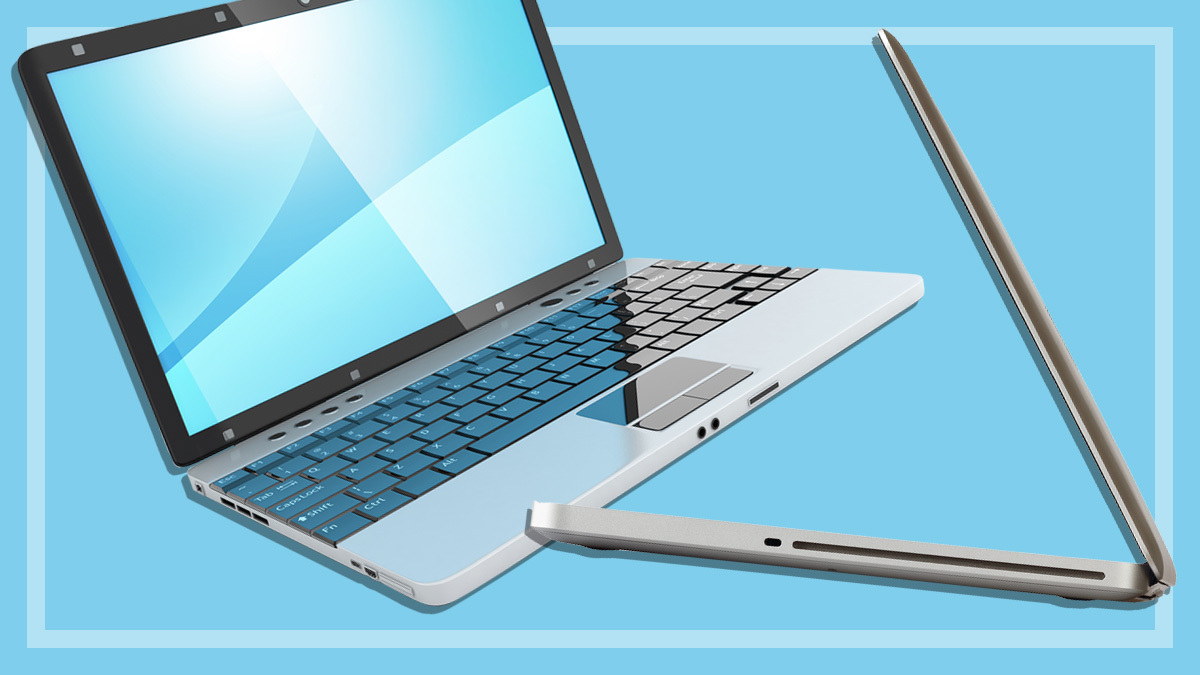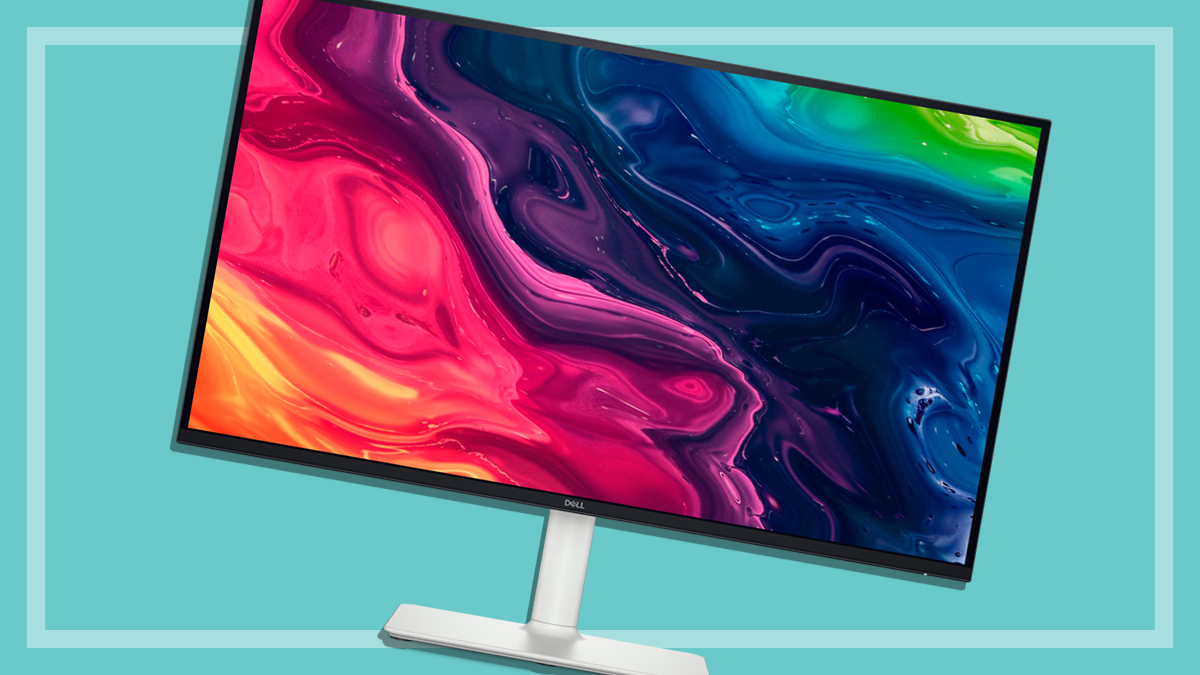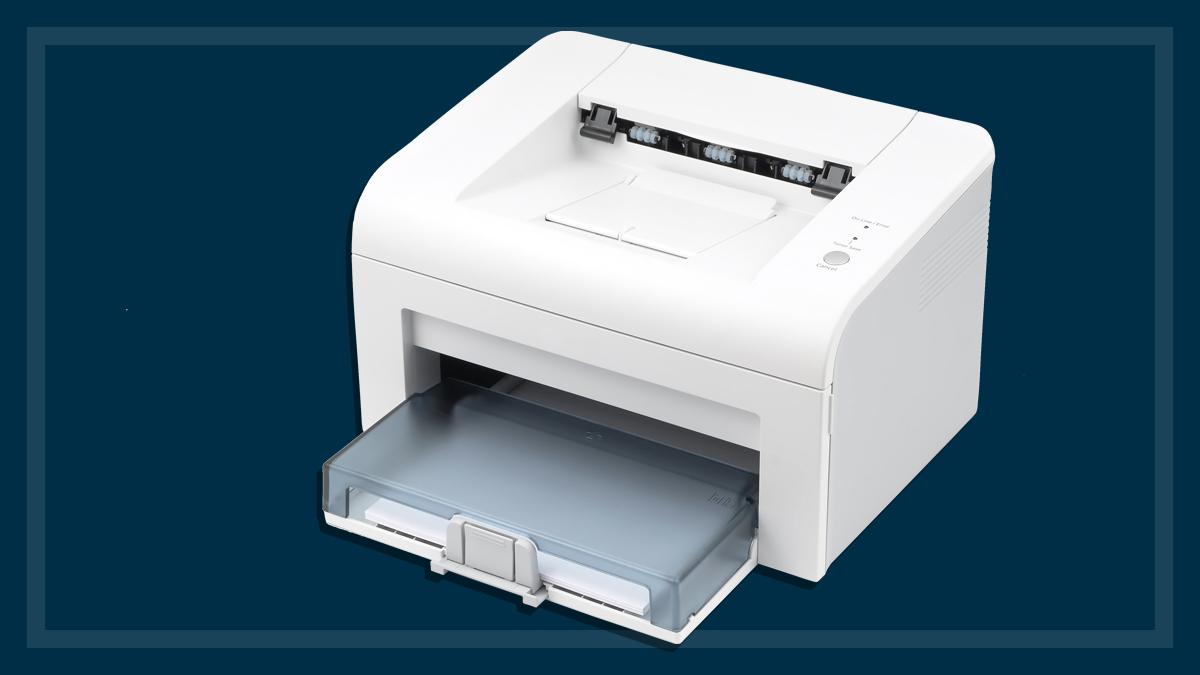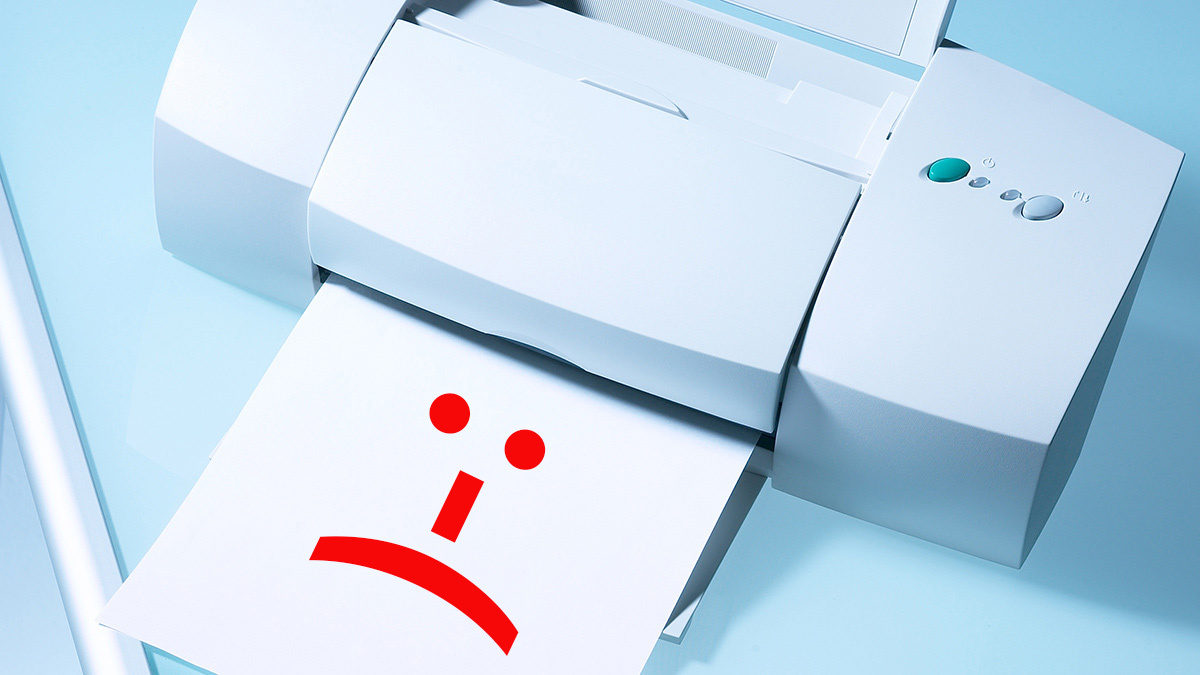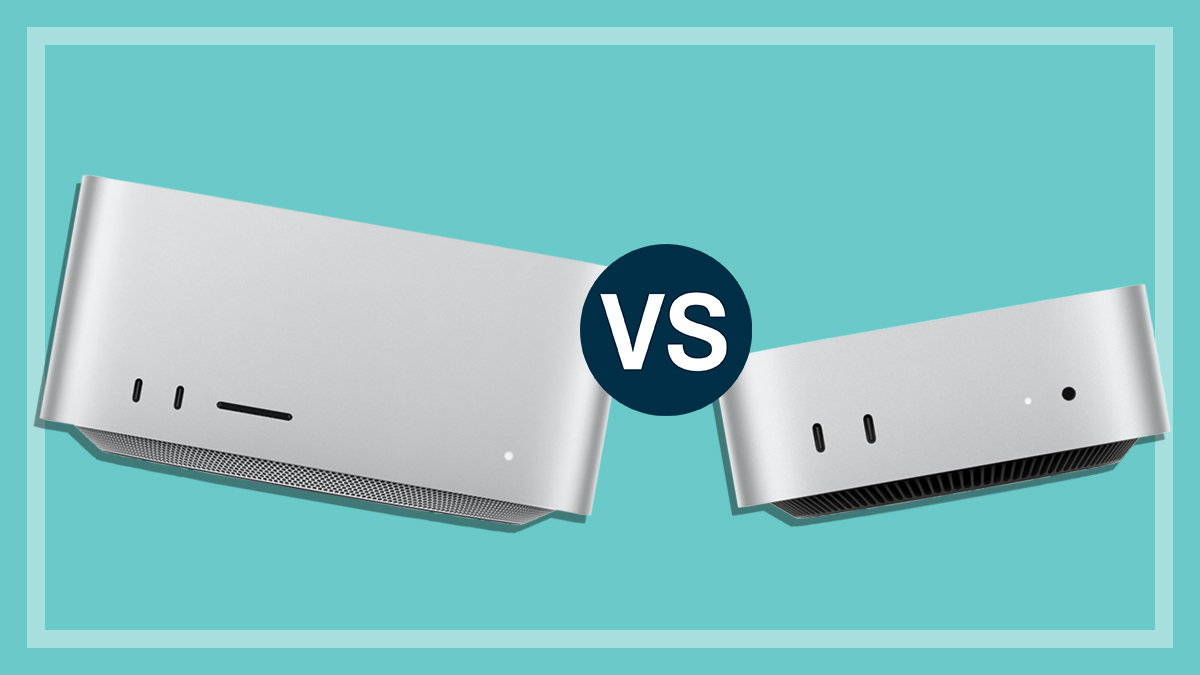Get our independent lab tests, expert reviews and honest advice.
Is this affordable student laptop from ASUS worth it?
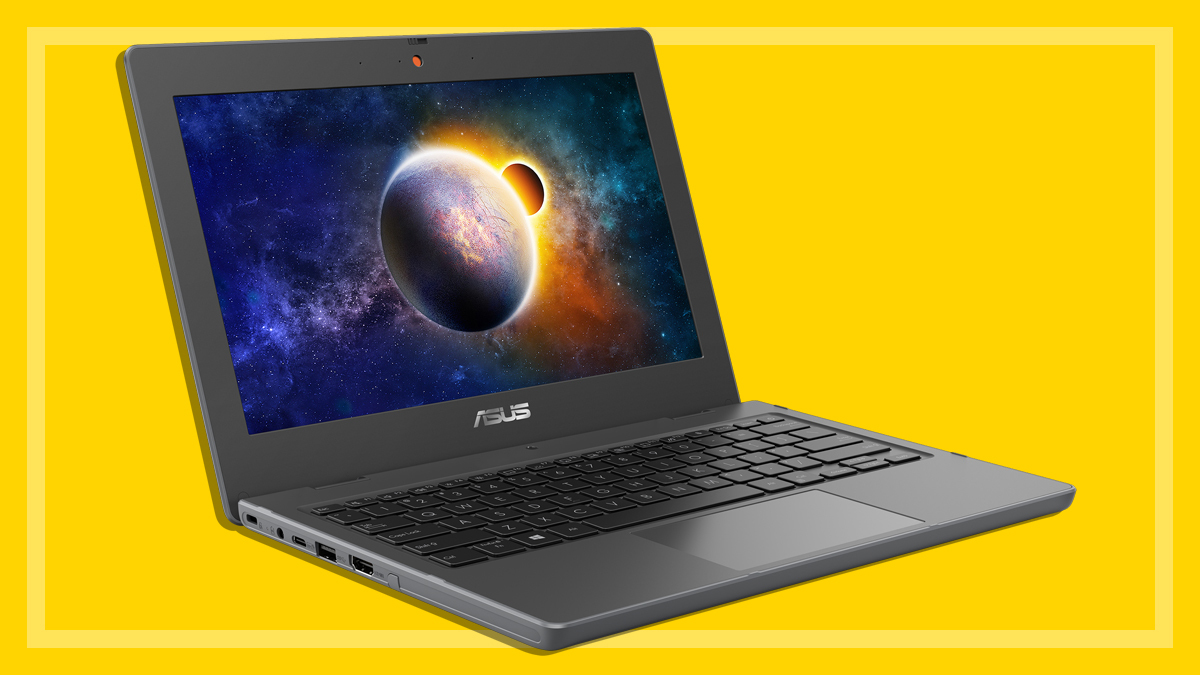
CHOICE verdict
While there are relatively low-cost laptops that can be used by students, not many are made specifically for them – which is where the new ASUS BR1100F comes in. This 11.6-inch 2-in-1 notebook computer is designed specifically with the features students need, and the robust build required to go the distance amongst the rough and tumble of everyday school life. It’s a compact but full-featured package, including touchscreen and built-in stylus. It’s available through education resellers.
Price: $559
Contact:
asus.com/auThe ASUS BR1100F is tough by design
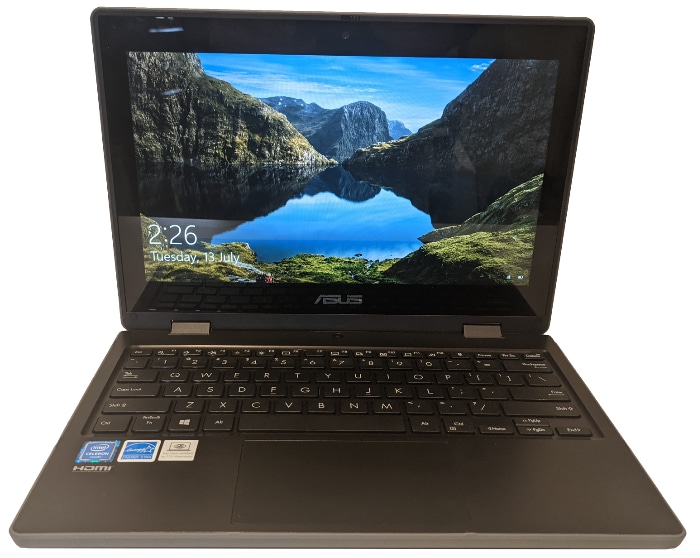
We took a hands-on look at a BR1100F model courtesy of ASUS, to see what kids should be packing for school these days.
Firstly, it needs to be robust, and the BR1100F is built to US military-grade durability standard (MIL-STD-810H). It’s designed to withstand knocks, bumps and even a 120cm drop, such as from a desk or table – though the grippy rubber texture on the lid and base should help minimise slippage.
It also has a spill-resistant keyboard to cope with liquids up to 330cc. Bumping the power button however, turns the laptop off, and we found this annoyingly easy to do in general handling.
The BR1100F also has a modular design for easy repair, which you don’t see much these days. This allows for key parts such as the keyboard, battery, thermal module and ports to be easily replaced if required, which helps keep potential long-term costs down.
How does the BR1100F perform?
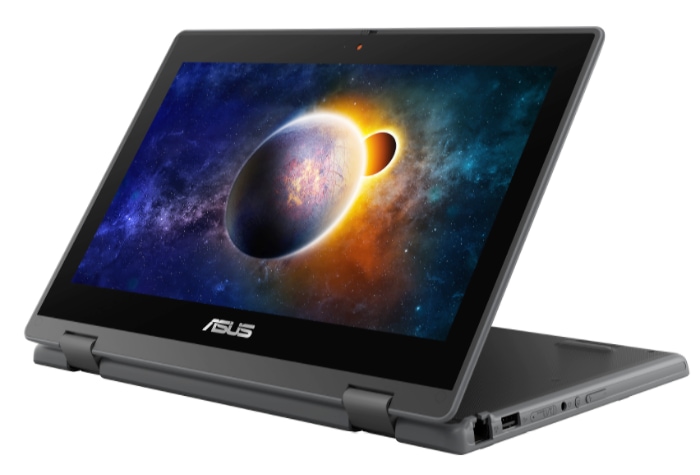
Our model was the BR1100FKA, but there’s also a non-touchscreen BR1100C available. These notebooks aren’t about high performance, and our test model used a dual-core Intel Celeron N4500 low-power CPU. The upside of this is that there’s no need for a fan and it runs silently, which will be a blessing in the classroom.
Performance was modest but was fine for most general tasks, though we found it could feel a bit sluggish when browsing websites or streaming video.
Our test model came with just 4GB (gigabytes) of RAM (memory) and 64GB of solid-state storage, which left a mere 17GB available for the user. This is quite low on both counts, but makes sense when you consider its intended purpose.
Performance and storage are both modest, but suitable for cloud-based learning
A lot of onboard storage for this type of laptop isn’t really needed as schools tend to use the cloud a lot and most class work is done via Google Classroom. Saving documents in the cloud is likely a better strategy for students than using local storage, where they could be lost if the computer itself is lost or damaged.
Some people may prefer more, of course, and ASUS says you can also get it configured with up to 128GB of eMMC storage and there’s also an internal M.2 SSD slot which can optionally take up to an additional 1TB (terabyte).
Keyboard and touchpad
The typing area feels a bit cramped for adult hands, but that’s not who it’s designed for. It should be fine for young students. The keyboard isn’t backlit and there isn’t even a light on the caps lock button, but the keys themselves feel soft to type on, with good travel and response.
The touchpad is adequate, considering the laptop size, and supports all Windows 10 gestures. The keyboard, touchpad, and palm rest are all coated with anti-bacterial protection, which is a nice touch.
What ports are on the BR1100F?
There’s a useful array of ports that include USB-A ports (USB 2.0 and 3.0), USB-C, and full-sized HDMI, gigabit ethernet, but no memory card slot, plus Wi-Fi 5 (802.11ac) and Bluetooth 5.1. There’s a lock slot for a third-party security cable.
Fold-back screen
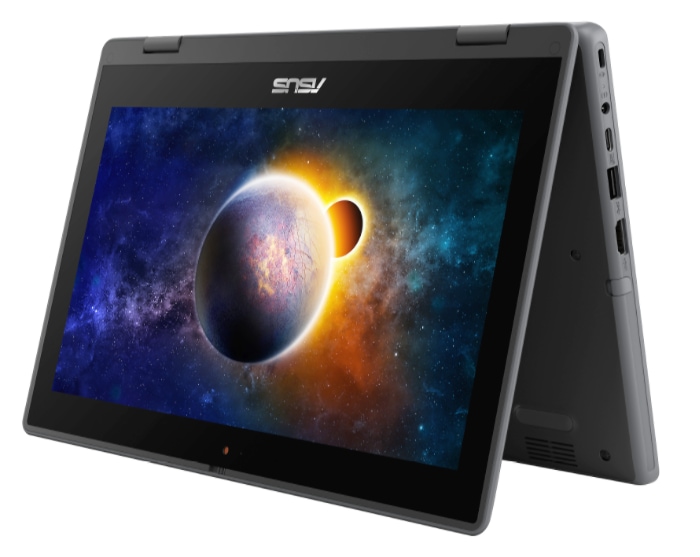
The BR1100’s 360-degree screen hinge lets you use it in four modes – laptop, presentation, tent and tablet modes. Though the touch screen doesn’t detach, when folded back fully to tablet mode, you can hold it up and take pictures through an 8MP (megapixel) outward-facing camera, just as you would with a stand-alone tablet.
While the 1366 x 768 pixel resolution of the glossy screen is low, the quality of the screen itself is very good. It has wide viewing angles, comfortable levels of contrast and brightness, and good colour reproduction.
Maximum brightness is on the low side for a tablet-style device, at a measured 218 nits, but should be fine in a home or classroom. The touchscreen is also certified by TÜV Rheinland for low blue-light emissions, which is intended to make it easier on the eyes.
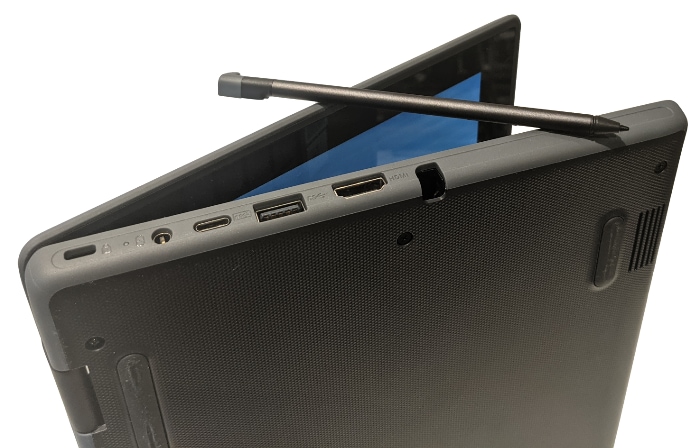
The 1MP webcam has a physical sliding cover for privacy, which is a welcome addition for peace of mind.
There’s a built-in 4096-level pressure sensitive stylus that you can slide fully into the base when not in use. We found it worked well for handwriting and drawing tasks.
Battery life and audio
You should get all-day battery life from the BR100F, which is what you would expect. In our heavy usage test it achieved 6hr 27mins, but normal usage would tax it much less so it should last a full school day and more.
Battery life should be all day, and more
The speakers emphasise high tones, and prominent vocals, which should be fine for video and online lessons, but not ideal for music. But you can plug in headphones and there’s Bluetooth 5.1 for wireless headphones and other accessories.
Buy through education resellers
Note that while widely available, these education laptops are not on mainstream shelves, but available through education resellers. Our model was priced at $559.
A plus is that the BR1100F comes with Windows 10 Pro Education (which provides education-specific default settings), rather than Windows 10 S Mode that is restricted to only Windows Store apps and comes with many cheaper laptops.
ASUS says the BR1100F has been received very well within the education sector and at the time of testing had already won a contract with the WA Department of Education. ASUS is quite confident that they’re onto a winner with this model for students, and with its emphasis on durability and a cost-effective price, it will likely be a winner with parents too.

